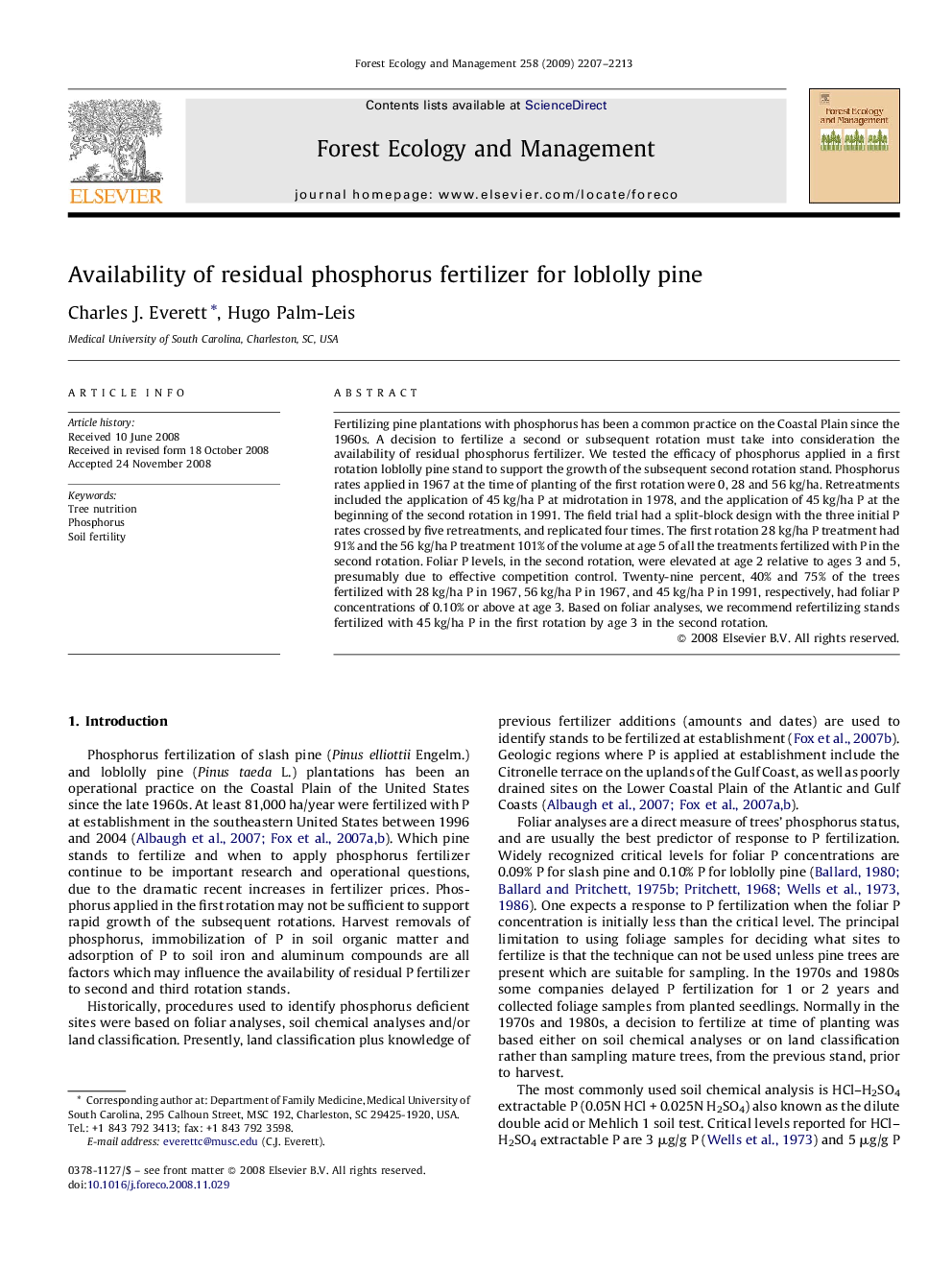| Article ID | Journal | Published Year | Pages | File Type |
|---|---|---|---|---|
| 88859 | Forest Ecology and Management | 2009 | 7 Pages |
Fertilizing pine plantations with phosphorus has been a common practice on the Coastal Plain since the 1960s. A decision to fertilize a second or subsequent rotation must take into consideration the availability of residual phosphorus fertilizer. We tested the efficacy of phosphorus applied in a first rotation loblolly pine stand to support the growth of the subsequent second rotation stand. Phosphorus rates applied in 1967 at the time of planting of the first rotation were 0, 28 and 56 kg/ha. Retreatments included the application of 45 kg/ha P at midrotation in 1978, and the application of 45 kg/ha P at the beginning of the second rotation in 1991. The field trial had a split-block design with the three initial P rates crossed by five retreatments, and replicated four times. The first rotation 28 kg/ha P treatment had 91% and the 56 kg/ha P treatment 101% of the volume at age 5 of all the treatments fertilized with P in the second rotation. Foliar P levels, in the second rotation, were elevated at age 2 relative to ages 3 and 5, presumably due to effective competition control. Twenty-nine percent, 40% and 75% of the trees fertilized with 28 kg/ha P in 1967, 56 kg/ha P in 1967, and 45 kg/ha P in 1991, respectively, had foliar P concentrations of 0.10% or above at age 3. Based on foliar analyses, we recommend refertilizing stands fertilized with 45 kg/ha P in the first rotation by age 3 in the second rotation.
